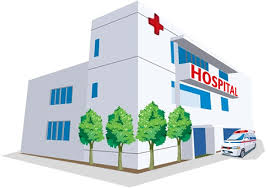Title Page
-
Site conducted
-
Conducted on
-
Prepared by
-
Location
Administration
-
1. There are written policies for Preparation, handling and storage of food, Cleaning and sanitizing of tableware and utensils, and employee health relating to communicable diseases /illnesses.
-
2. There is a written copy of local health department regulations for storage, handling and disposal of garbage.
-
3. There is evidence of education for Food Service staff relating to safe food handling and foodborne diseases.
-
4. The Manager/Supervisor is knowledgeable of the responsibility of Dietary/Food Service in the event of a foodborne outbreak
Receiving Food
-
1. Evidence that all foods are inspected upon delivery
-
2. Dented cans returned to the provender for credit
Storage of Food
-
1. Food is stored only in designated areas in appropriate containers.
-
2. Toxic cleaning materials and non-food items are stored away from food products.
-
3. Food is stored at least 12” above floor level, away from walls in a cool dry ventilated area free of insects and rodents.
-
4. Stock rotated, expiration dates are periodically checked. FIFO
Refrigeration Temperatures for storage of perishable foods are as follows
-
1. Meats/Poultry – Freezer:(-10°F-10° F) Refrigerator: (34°F-40°f)
-
2. Fish (frozen) - 100 F
-
3. Diary Products/Eggs – (36°F-38°F)
-
4. Produce – (32°F-40°F)
-
5. Ice Cream/Frozen Foods – 0°F
Food Preparation/Cooking
-
1. Frozen foods are thawed in the refrigerator at temperatures of 400 or below.
-
2. Food cooking temps for poultry, stuffed meats, and stuffed pastas: 165°F
-
3. Food cooking temps for ground beef: 155°F
-
4. Food cooking temps for beef/pork roast and fish: 145°F
-
5. Staff avoid touching food directly by using appropriate utensils.
-
6. Equipment free of pits/crevices, chips and cracks
-
7. Staff wash and dry all utensils, food contact surfaces and equipment between preparation of food items
-
8. Reheated food cooked to a minimum of 165°F
Egg Handling and Preparations
-
1. Bakery used regular shell eggs in all baked goods
-
2. Pasteurized eggs will be used for cooking eggs for patients and residents.
-
3. Liquid eggs will be used for all scrambled eggs requested, unless patient is lactose intolerant in which case, shell eggs will be scrambled to order
Management of Garbage
-
1. Only leak proof, easily cleaned garbage containers with tight fitting lids are used.
-
2. All garbage is promptly put in garbage containers and stored outdoors or on a smooth surface of non-absorbent material (concrete, asphalt).
Cleaning equipment/food contact surfaces/non-food contact surfaces
-
1. All food grinders, choppers, and utensils are cleaned sanitized, dried and reassembled after each use.
-
2. The dishwashing machine is maintained and run according to manufacture’s recommendations.
-
3. Multiquat Oasis 137 used for all food contact surfaces
-
4. Utilizing color coated cutting boards correctly
-
5. Fans not blowing directly on foods
-
6. Non-food contact surfaces are cleaned as often as necessary to keep them free of dust, dirt, food particles, etc.
-
7. Food contact surfaces are washed, rinsed and sanitized after each use and following any interruption of operations during which time contamination may have occurred.
Cleaning Rags
-
1. Red buckets have Microquat solution, Green buckets have soap and water
-
2. Red buckets kept below or away from food.
-
3. Sanitizing solution changed every 2 hours.
Ice Machines in the food service area
-
1. Ice is kept in ice machine with the doors remaining closed.
-
2. Ice scoops and buckets ran through dishwasher at the end of the night.
-
3. The top of the ice machine is free of food items.
-
4. Ice scoops are stored in a clean, covered dry tray (not in the ice).
Ice Machines on patient care units
-
1. The top of the ice machine is free of any stored items.
-
2. In the event of a mechanical malfunction, ice will be transported in a clean, covered food service approved container from another machine in the facility.
Cafeteria specific Infection Control practices
-
1. Hot food is maintained at 140°F (Minimum)
-
2. Foods are held in small batches and at no time is additional food added to the contained.
-
3. Food is served with tongs, scoops, and spatula, etc.
-
4. “Sneeze Guards” at salad bars and serving lines are used
-
5. Cold salad and desert tables are maintained at 400° F.
-
6. Two-stage cooling requirement being used
-
7. Food temps recorded on the log outside the refrigerator
-
8. Leftovers labeled and stored in freezer or refrigerator no longer that 3 days.
Dish Room Procedures
-
1. Temperature of dish machine final rinse water is at least 180°F, monitored and recorded after each meal.
-
2. Silverware washed twice
-
3. All dishes and silverware allowed to air dry before being used again.
Personal Hygiene
-
1. Food Service staff adhere to the uniform policy
-
2. Disposable gloves are used when preparing or serving food.
-
3. Staff do not touch face, nose, mouth or clothing while preparing, serving food.
-
4. Staff wash hands appropriately and no jewelry except a watch, wedding/engagement ring and small earrings
-
5. No fingernail polish or gel/acrylic nails.
EOC
-
1. All cylinders (oxygen, other compressed gas) are secured
-
2. Fire extinguishers not obstructed from easy access
-
3. No electrical panels are blocked
-
4. Hospital furnishings/equipment are kept in good repair
-
5. Countertops/doors are in good condition with no chipping to laminate
-
6. No supplies stored under sinks
-
7. Paper is not present on fire-rated doors
-
8. Maintains the integrity of egress throughout the department
-
9. There is at least 18" of open space maintained below a sprinkler deflector to the top of storage








